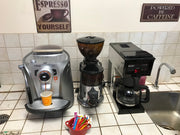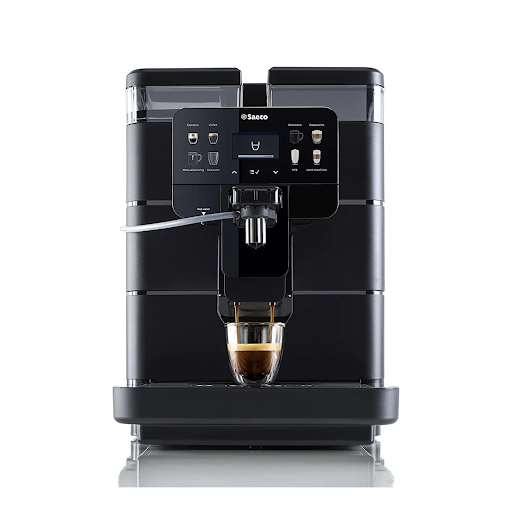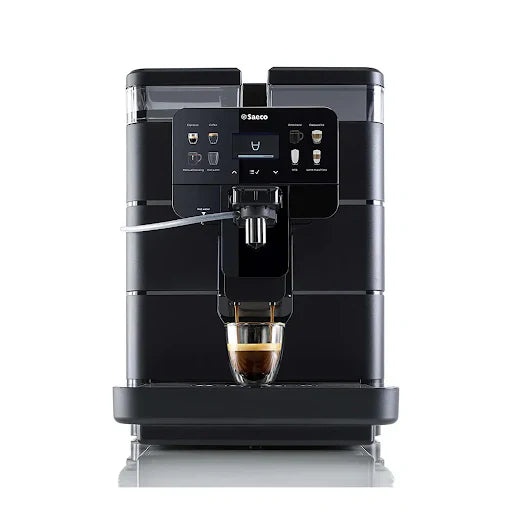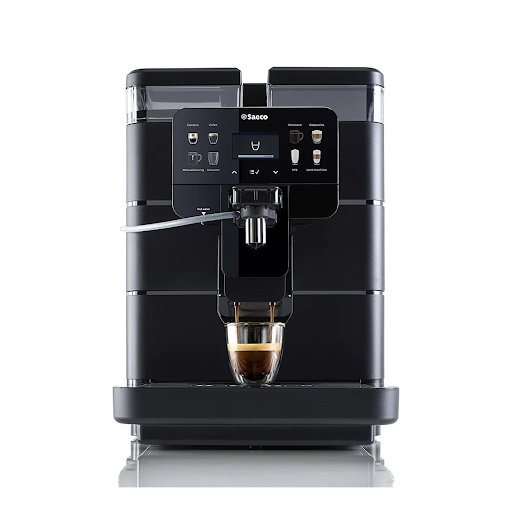Saeco, what makes this brand an industry leader of superautomatic espresso machines?
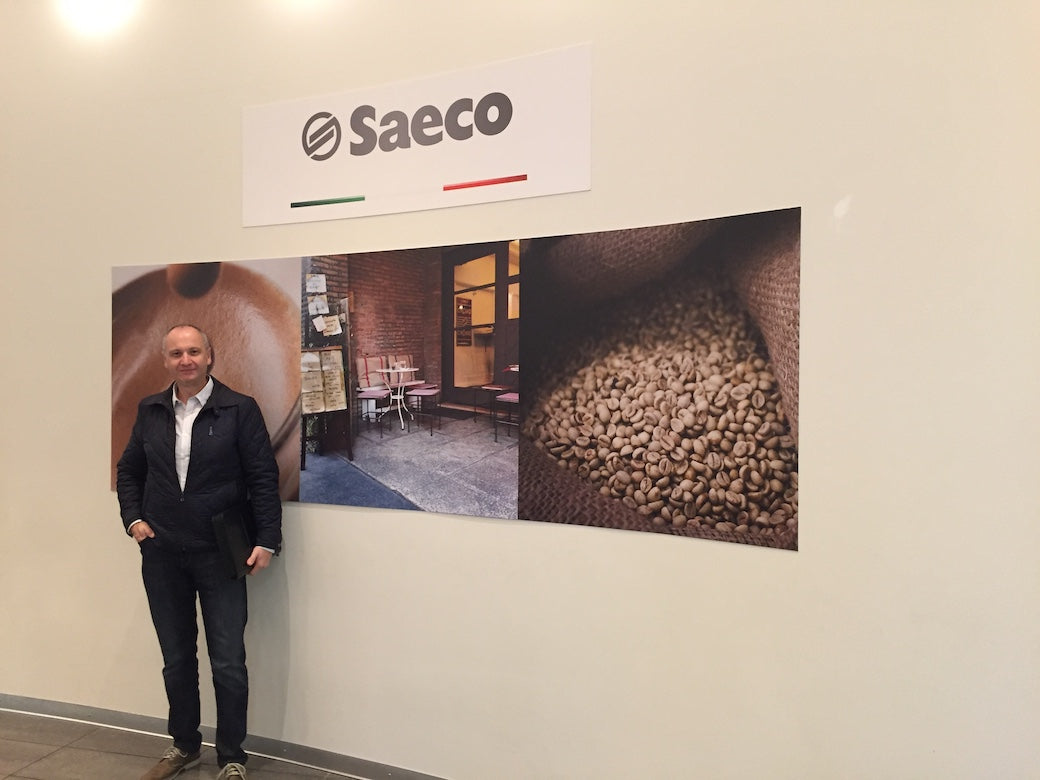
Saeco is a company which has been passionate about bringing a top quality espresso experience to consumers in their homes for over 30 years. They have proven time and again they are a leader in the superautomatic espresso machine industry for their ongoing innovations.
Founding of Saeco
In the beautiful hills of Gaggio Montano, located between Bologna and Florence, Sergio Zappella and Arthur Schmed founded SAECO – the name which is an acronym for S (Sergio), A (Arthur) E (the Italian word “and”) and finally CO (company). Starting in 1981, the duo vowed to bring the best and freshest coffee directly into people’s homes. With the launch of the Superautomatica in 1985, they did just that.

Introduction of Saeco’s Superautomatic Espresso Machine
The Superautomatica, launched in 1985, was the first home espresso machine on the market, which at the touch of a button, the machine automatically ground the beans for a wonderfully aromatic espresso complete with a thick, fragrant “crema” on top.
The proprietary removable brew group is the heart of the superautomatic machine, allowing the consumer to remove and clean the brew group as needed. This patented design is a hallmark of the brand from its origin and continues to be a distinctive advantage of SAECO. The simplicity of cleaning and maintaining the machine is what makes this brand unique and attractive to the home consumer.

Since then, the company has been committed to a long process of continuous innovation, often serving as a role model for the industry. The company is driven by several related goals
- developing an espresso machine focused on the perfection of taste;
- building them to individualize the coffee preparation to personal preferences and tastes;
- providing a variety of drinks; and above all,
- preparing coffee drinks had to be easy.
Introduction of Saeco Electronic Twin Superautomatica
Driven by the authentic passion for the Italian tradition of espresso, Saeco continued to consolidate their strengths and forge new frontiers. Their next challenge was to build a machine that would simultaneously prepare two cups of coffee. This led to the creation of the Saeco Electronic Twin Superautomatica introduced in 1989.

With the introduction of the Twin, the bypass doser was also born – the component that allows the consumer to use pre-ground coffee for decaf. Again, demonstrating that consumer choice and coffee personalization was at the forefront of SAECO design.
Introduction of the Warming Plate
In 1994, the Magic line was introduced and became the “Best New Product” of 1996 thanks to the introduction of a great innovation – the cup warmer plate. This element allowed the preheating of cups, which ensures the coffee remains hot through consumption. Additionally, warm cups ensure the “crema” persists longer and maintains its intense aroma to the last sip.
This time was also when thermoblock boilers were introduced as well as a totally redesigned brew group. The design of new boiler permitted water to be heated on demand while travelling through small passages. This innovation replaced the traditional boiler which relied on a boiler containing a quantity of water that was constantly heated.
Introduction of the Cappuccinatore
1996 was another important year for Saeco innovation. It is in this year that the Cappuccinatore was introduced on the market. This new device draws milk directly from its own container and turn it into a smooth froth. This was a huge step forward to the home consumer looking to make café style specialty drinks at home.
Introduction of Digital Display
During this period, there was a huge step forward in the use of electronic technology in the appliance market. In 1998, SAECO presented the first automatic coffee machine with digital display. As well, the pre-infusion system was introduced. The ground coffee is moistened before the delivery process – a characteristic of professional machines, which heightens the intensity of the aroma of coffee.
Innovations to Meet the Demands of Millennials
With the new millennium, lifestyle changes began to emerge. More streamline designs to fit smaller and modern spaces were desired. In response to consumer demands, Saeco introduced a new series called Incanto This series was smaller than any other machine. A focus on espresso machines with a sleek design with a small footprint has been an ongoing element of the Saeco design until present day.
Also during this period, there was a great surge in the food culture. Customization and attention to detail became part of both the food and coffee culture. To satisfy the demanding coffee connoisseurs, the Saeco Brewing System (SBS) was developed. This special system allowed the consumer, with a simple twist of a knob, to control and adjust the desired strength and crema density of each cup of coffee.
Espresso machines with a touch screen are also introduced at this time. But an important innovation is the Macinacaffé – a ceramic coffee grinder, containing no metal parts. Ceramic grinders allow bean to be ground at a low temperature and avoids heating the grinds to insure a higher precision grind for any type of coffee bean.
In 2006, the Talea line entered the market, launching a new era of coffee pleasure along with superior taste and aesthetics. Talea won two major award in the design category, the Plus X Award – one of the most important international award in applied technology for appliances and lifestyle and the Red Dot Design Award of 2007.
The rounded shapes of the Talea were modified for the young and trendy Odea line. The Odea line won the IF Product Design Award in 2008, a prestigious international award in product design.
2006 also marked a distinguishing patent for Saeco. Taking into consideration that coffee beans are a natural product whose characteristics change according to place of origin, year of harvest and methods of drying, roasting and blending the Saeco Adapting System is introduced. This system optimizes the grinding stage to ensure the same full flavor regardless of the varieties of coffee beans used. This is why the Italian Tasters Association has concluded that Saeco design actually enhances the taste of coffee.
In 2008, the X Small Line is also launched. A machine which won the coveted Plus X Award of 2009 in the design category.
Saeco Teams Up with Philips
In July 2009, Philips, also an industry leader in the area of manual and portioned coffee machines, acquired Saeco. Dubbed the perfect marriage because of the high-quality reputation of Philips and the skill and passion of Saeco.
It is in this year that the Syntia is launched. A true synthesis of style and performance. The machine is compact with refined designed. It uses sophisticated materials such as stainless steel and is coupled with incredible functionality and ease of use thanks to the simple to use display.
Syntia was awarded the Plus X Award in 2009 for two categories: High Quality and Ease of Use. The High Quality Award is one of the most important certifications of excellence that a product can achieve and represents Philips Saeco’s dedication to high standards of quality, durability and reliability.
The Ease of Use award highlights Philips Saeco’s commitment to provide consumers with a fully automatic coffee machine that is easy to use.
2009 also saw the release of the Xelsis. This is significant because with this machine, each family member can customize their favorite drinks and store the data so it can easily be accessed with a touch of a button.
Introduction Finger Print Technology
In 2010 the company introduced the first automatic espresso maker with finger print technology. It was the evolution of the Xelsis – the Xelsis Digital ID, which uses fingerprint reader recognition makes getting a customized coffee even simpler and faster and more accurate.
The introduction of this feature once again heralded Philips Saeco as a true leader in the superautomatic espresso machine industry. The idea was of having the perfect Italian “barista” right in your home – a person who knows his clients’ tastes and delivers the perfect coffee each and every time.
In 2015 Saeco also introduced bluetooth technology with the launch of the GranBaristo Avanti, Now consumer's could make their espresso any way they liked directly from their device.
In 2018, another evolution of Xelsis occurred once again. Currently the hottest selling machine on the market, this machine represents the combination of all of innovations Saeco is famous for. The Xelsis SM includes six user profiles, a touch screen, a one-touch cappuccino system, a cup warmer, a HygieSteam system which sanitizes the milk foamer, and a coffee equalizer which intuitively adjusts the characteristic of your drinks. It is the first machine that not only can make two espressos but the duo-latté system allows two cappuccino or lattes to be made simultaneously.

Why You Can Feel Confident in Investing in a Philips Saeco Espresso Machine
Saeco is an industry leader because it continues to be committed to constant technical improvements in design, ease of use, and beverage quality. Aesthetics have always received special attention, making the Saeco machines an elegant compliment to any home design. Their machines are seen themselves as functional art that harmonizes with any décor.
This company’s research and innovation are ongoing. The work to continuously improve the interaction between man and machine, studying the latest technology which allows making coffee easier and more intuitive evidenced by each line released.
Do you have a Saeco machine? If not, it is certainly a brand that is worth your attention. The fact is that those who have invested in a Saeco superautomatic espresso machine have not been disappointed. In fact, consumers have shown their satisfaction through brand loyalty and the only change they make is upgrading the model they have. Many consumers also cite having their Saeco for many years. Check out customer reviews here.


